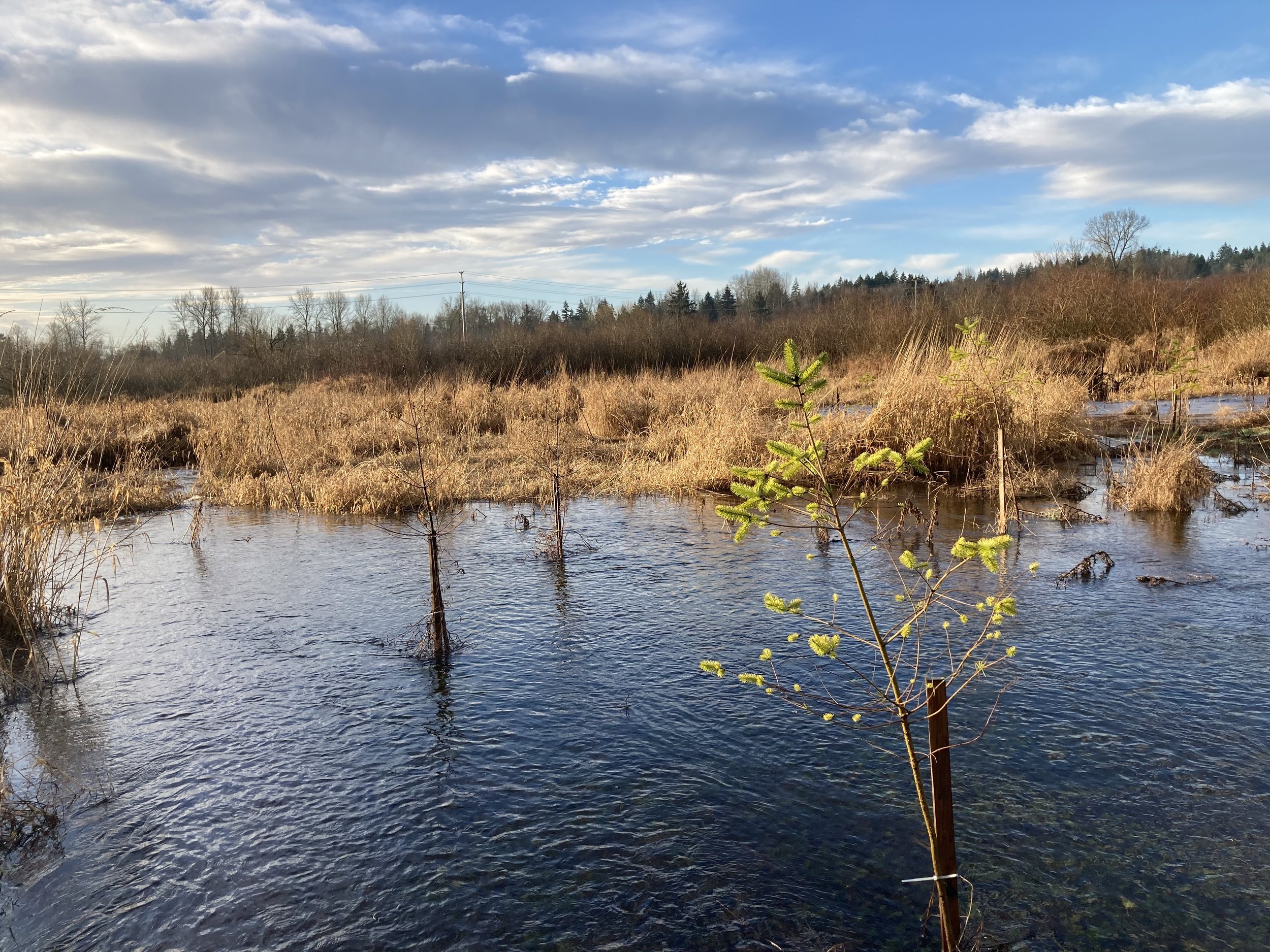CONSERVATION RESERVE ENHANCEMENT PROGRAM
Table of Contents
Eligibility
Why Enroll?
Would you like to be paid for land set aside as a stream buffer?
Would you like to be a part of a program that pays to establish riparian buffers?
The Conservation Reserve Enhancement Program (CREP) is a joint federal and state-funded program that restores habitat for salmon and protects that habitat for a contract period of 10-15 years. Most of the funding (80%) comes from the Farm Service Agency with the remainder provided through the Washington State Conservation Commission.
CREP plants native trees and shrubs along the edges of rivers, streams, and wetlands to improve salmon habitat. These plantings are called “riparian buffers.” All of the costs for the riparian buffer are paid by the program.
The program also assists the landowner with oversight and maintenance for about five years after planting to assure success. The landowners are paid an annual payment, called a “rental payment,” for allowing their land to be used to grow native trees and shrubs for the benefit of fish and wildlife. Landowners/land managers also receive a modest monetary bonus payment for signing up.
How to Know if You're Eligible
A local CREP technician will help you determine if you and your property meet eligibility criteria for the program. General requirements include:
You must have owned and/or operated your land for at least 12 months before enrollment.
Land must be either cropland or marginal pastureland, be able to support the required vegetation, and have the required cropping history.
Your property must border eligible stream segments. A map of eligible segments is available from the Washington State Conservation Commission CREP website (www.scc.wa.gov/crep). Generally, stream segments must have at least one species of Pacific salmon or steelhead present.
Eligible CREP Activities
Property must provide habitat for salmonid fish that migrate to the ocean.
Forest Buffers: Plantings of native trees and vegetation bordering a river or stream.
Hedgerows: Narrow strips of native shrubs planted on eligible streams and drainage channels.
Grass Filter Strips: Strips of grassy vegetation planted along stream segments that are upstream of salmon habitat.
Wetland Restoration: Planting native wetland vegetation, including establishment of an upland buffer. Criteria for eligible restoration practices varies depending on whether the site is within or outside of the 100-year floodplain area. This practice is eligible on cropland.
Pastureland Wetland Buffers: Bands of vegetation planted on marginal pastureland that is adjacent to wetlands.
Buffer Guidelines
Buffer averaging can be used in areas where the minimum width cannot be met (i.e. around buildings).
Landowners can enroll all or part of a stream length, and one or both sides of a stream.
Program Flexibility
If your property is eligible for this program, one of our CREP technicians will work with you to develop a project plan that meets both the program requirements and your goals for your property. CREP allows for some flexibility in the width of the riparian buffer planted along the stream, river, or wetland. The width flexibility changes based on site conditions, existing structures and infrastructure, and landowner needs. You may enroll all or a portion of your eligible streamside property.
Why Should You Enroll?
Benefits for Fish
Buffers absorb nutrients and other pollutants before they reach streams
Trees and plants shade the stream, cooling water temperatures for salmon
Trees fall into streams providing habitat and rearing pools
Vegetation stabilizes stream banks and reduces erosion
Benefits for Farmers
Steady rental income for the area planted with native trees and shrubs for 10-15 years, depending on soil type and enrolled activities
One-time signing bonus payment
Entire cost of project installation is covered
Project maintenance cost is reimbursed for the first five years
Reimbursement for fencing that keeps livestock from the buffer
Option to re-enroll
Enrollment Incentives
Annual rental payments ranging from $63-$248 per acre per year, depending upon the soil type(s) on the site.
Signing incentive payment of $100/acre for 10-year contracts and $150/acre for 15-year contracts.
Reimbursement of 100% of eligible implementation costs.
Reimbursement of 100% of eligible maintenance costs for up to five years.
CREP in Action - Salmon Restoration in Arlington, WA
Participating Partners
CREP is a federal program authorized by the USDA Farm Bill and administered by the Farm Service Agency.
State funding and coordination is provided by the Washington State Conservation Commission.
Conservation district and Natural Resource Conservation Service staff provide local technical assistance, working one-on-one with landowners throughout project planning, installation, and maintenance.





